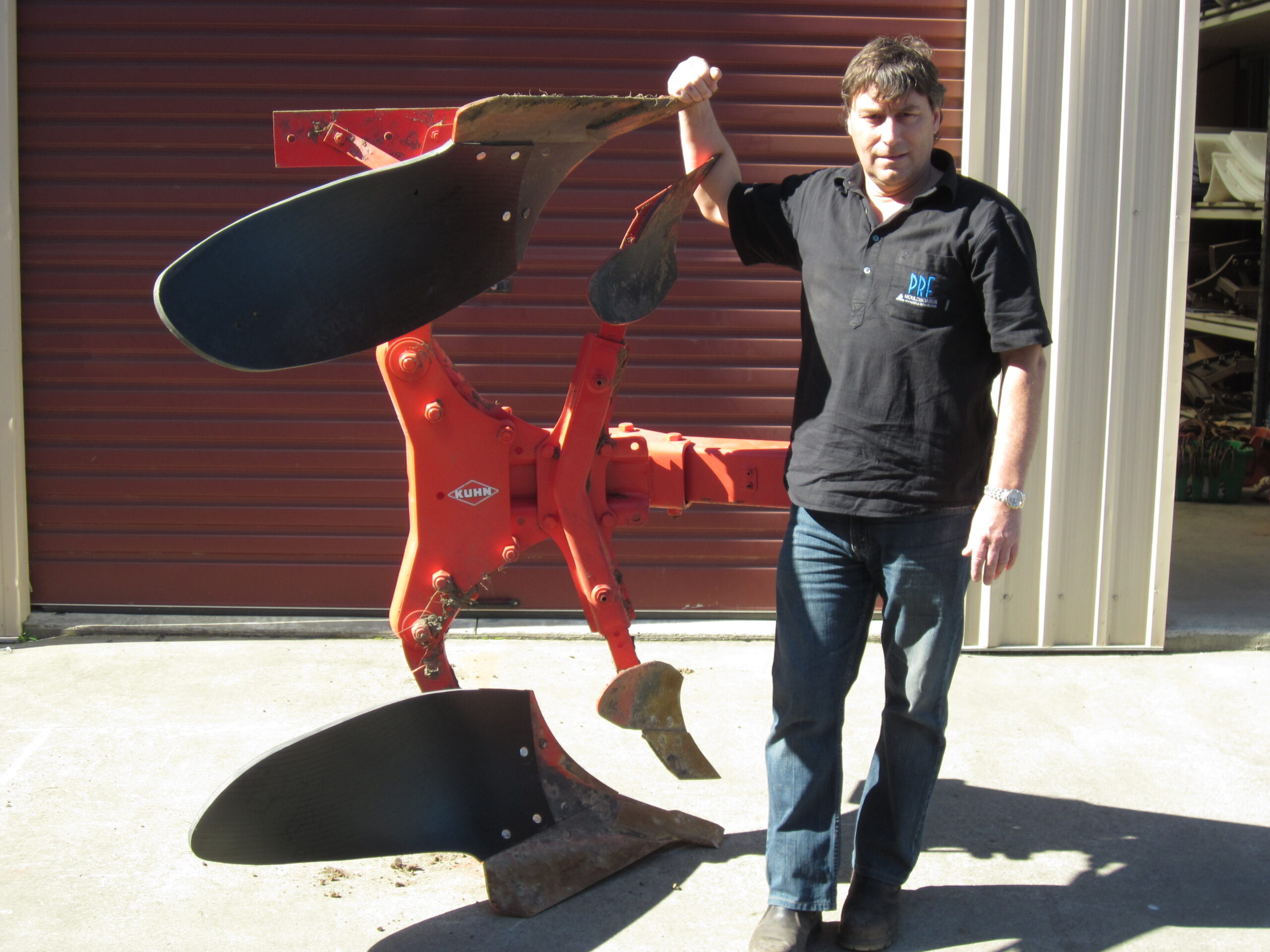PRF Mouldboards is giving a whole new meaning to the expression ‘Plastic Fantastic’, and it’s all happening down on the farm. For us townies, an explanation is required. For a start, what is a mouldboard?
“In the old days farmers would turn their soil using a single plough pulled by a horse or oxen,” explains PRF Mouldboards managing director Vaughan Dawson. “This was superseded by the mouldboard plough – also known as the ‘frame plough’ or ‘turn plough’.
“A mouldboard is the piece that bolts onto the end of the plough arm, just above the share. The share cuts into the soil and lifts it up; the mouldboard then carries the soil up and over, allowing for a furrow to be formed for sowing later.”
Wanganui based PRF Mouldboards was spawned out of Plastic Repairs and Fabrication Ltd (PRF Ltd) in 2009. It’s a family business with three permanent employees and is the only New Zealand manufacturer of mouldboards.
Dawson says they have conducted significant research and field trials over the years to fine-tune the mouldboards, receiving assistance from the Ministry of Business Innovation and Employment in the process, and they are totally committed to manufacturing locally.
“We’re true blue Kiwis, we believe in employing Kiwis and supporting businesses that make and manufacture products in New Zealand,” says Dawson. “For example, all the ancillary parts to our mouldboards are manufactured here. It’s not just about our business; it’s about supporting other Kiwi businesses in the value chain. As we grow, so they grow – all round it makes good economic sense.
“If we were to manufacture offshore, we may compromise our stringent quality control and we certainly would not be able to offer ‘Just in Time’ deliveries or complete any rush orders we occasionally receive.”
PRF Mouldboards first started exporting to Australia a few years ago, following an initial enquiry through word of mouth recommendation. Aussie farmers have taken to the mouldboards just as enthusiastically as their neighbours across the Tasman.
“The opportunities for us in Australia are significant,” says Dawson. “Obviously we’re talking a much larger geographical area compared to New Zealand so the market scale is much bigger.
“We’ve also had a number of enquiries and have quoted on deals in the US, Canada, Norway and Southern Europe. We anticipate growing these markets over the next few years.”
Dawson says the export lessons learnt while building sales in Australia correlate directly to the opportunities. “The geography is so large it is challenging working across the various time zones and covering all our customers. The Australians are not as connected in terms of networks as us Kiwis; each state and company seems to run independently with little understanding of who is doing what. Freight charges are considerable too,” he says.
“There is very little specific information available on the agricultural sector in Australia,” Dawson adds, “so what information we have has been researched by ourselves at considerable cost in time and dollars. Unfortunately, we have been unable to access support from government or agencies back here on this count as we don’t meet the minimum criteria in terms of export dollars or company size. It is ironic that a company first has to export product and reach a certain level before it can access help.”
Going forward, PRF Mouldboards is looking to grow its Australian exports and target other identified countries.
“We’ll continue to investigate potential business partners in the Australian agricultural sector who’d be able to assist in providing specific information and data and possibly product warehousing and distribution,” says Dawson.
“Additionally we plan to conduct more R&D in each of our export markets to ensure that the product we supply is environmentally specific – delivering on our quality and durability promise.”
He says they’ve recently been contacted by a European plough manufacturer who is looking for an alternative supplier for plastic mouldboards. “We are very positive about progressing this relationship.
“We are also about to launch an international campaign promoting our mouldboards over the web. We believe the electronic survey methodology and promotion of our boards through traditional print media, in our target markets, will drive both potential individual customers and OEMs to us.”
Is plastic tougher than steel?
PRF Mouldboards has conducted considerable R&D but MD Vaughan Dawson says it is very hard to predict the lifespan of a mouldboard as they operate in many different environments.
“What we can say is that during extensive testing, our independent third party tester noted that they generally get 400 hectares to a steel mouldboard before it was exhausted.
However, after 400 hectares our plastic mouldboards still have plenty of life left in them; in fact, they have continued for a second season on our mouldboards and we have yet to replace them,” he says. “These particular mouldboards operate in an extreme environment where paddocks are stoney and full of gravel. We anticipate they’ll last 1000 hectares before they are exhausted; so it’s fair to say that our clients get better wear and tear from our product.”
Photo: Vaughan Dawson with new Plastic N body style mouldboards on a Kuhn plough.




